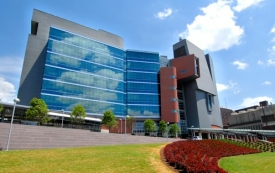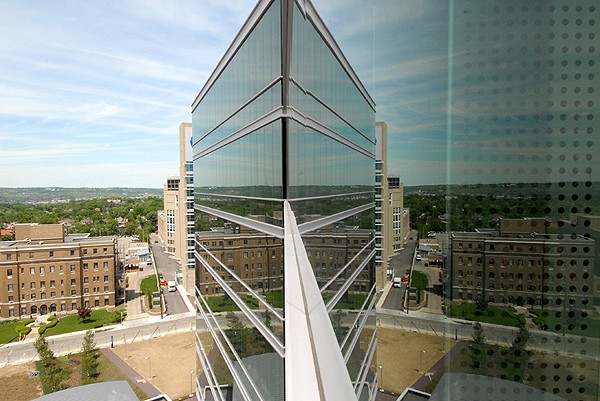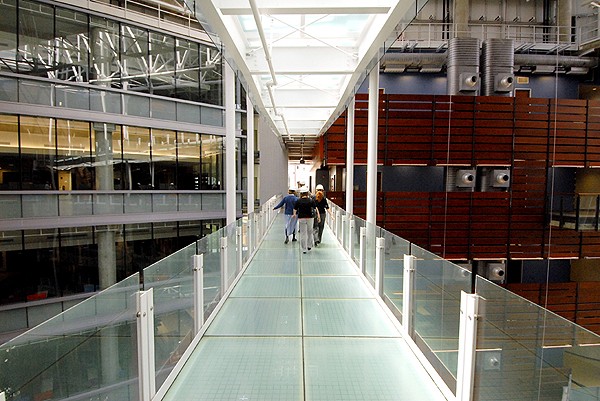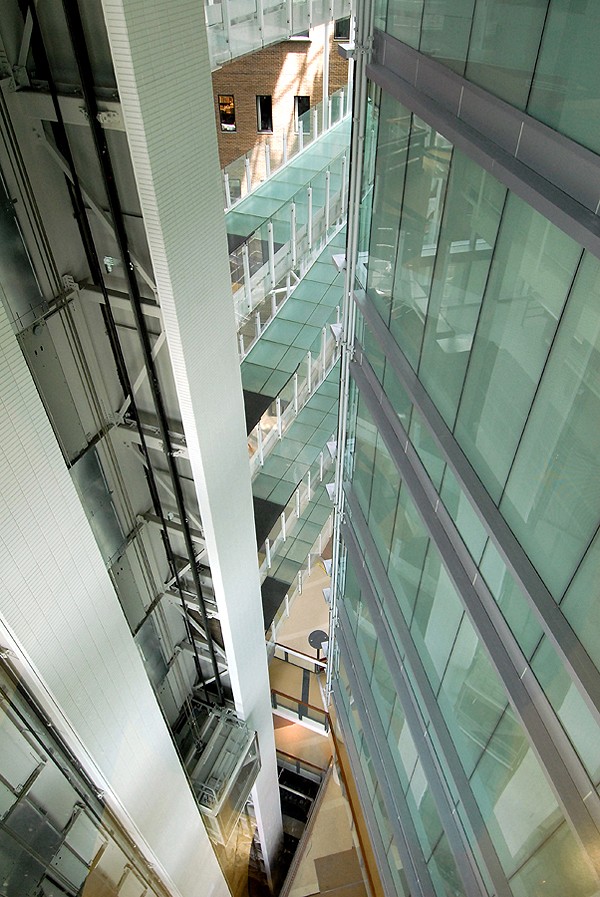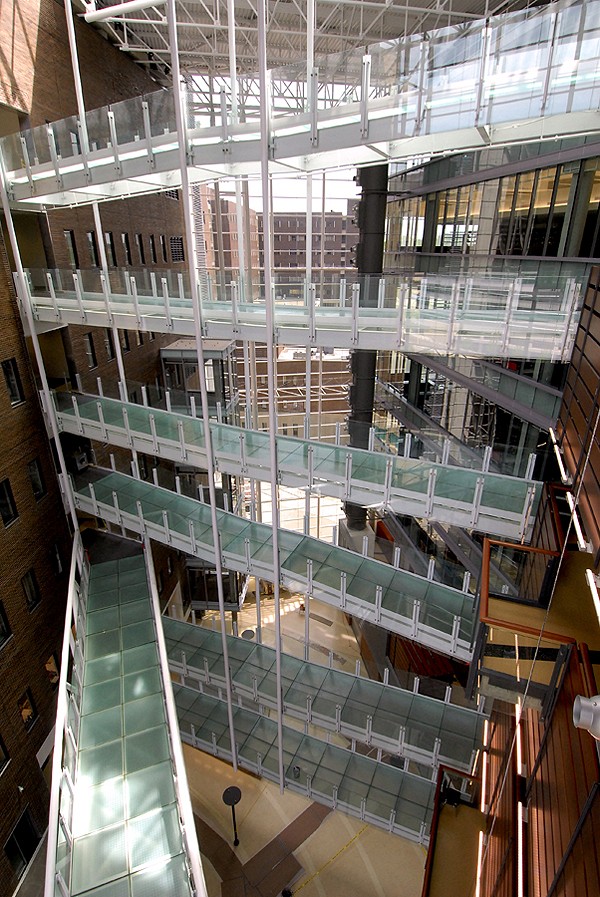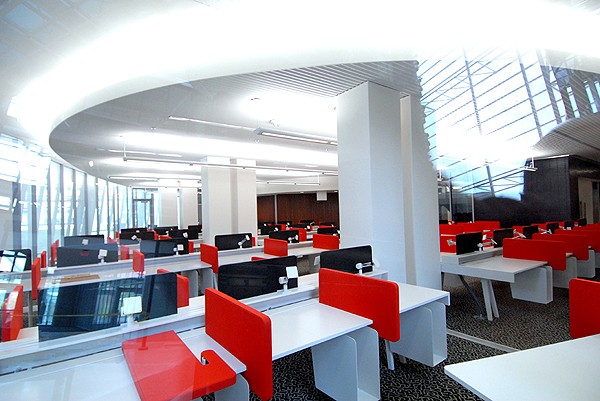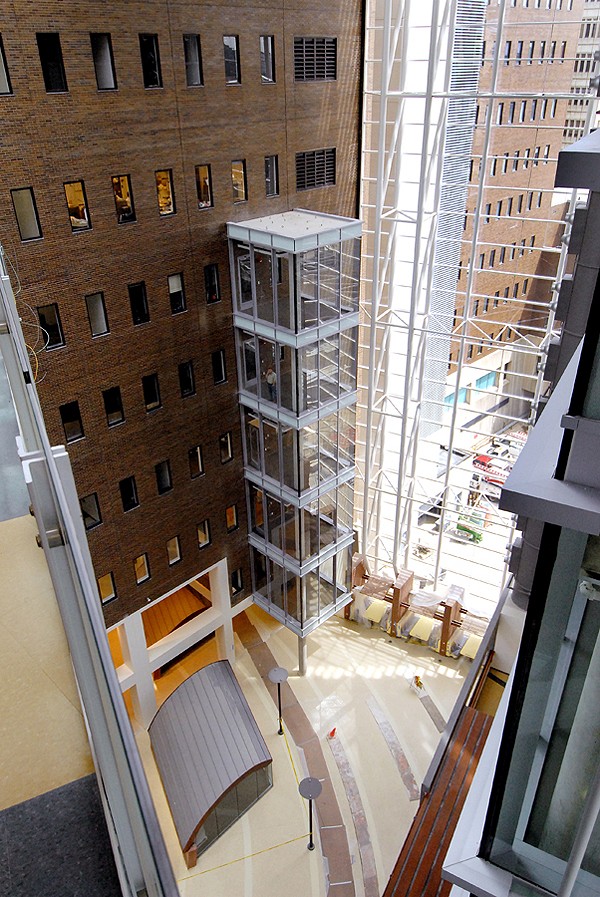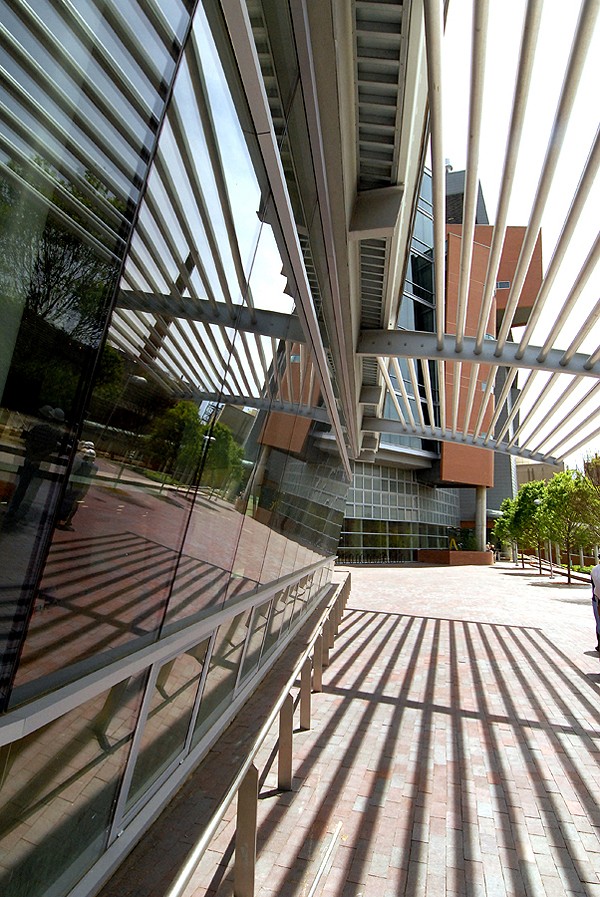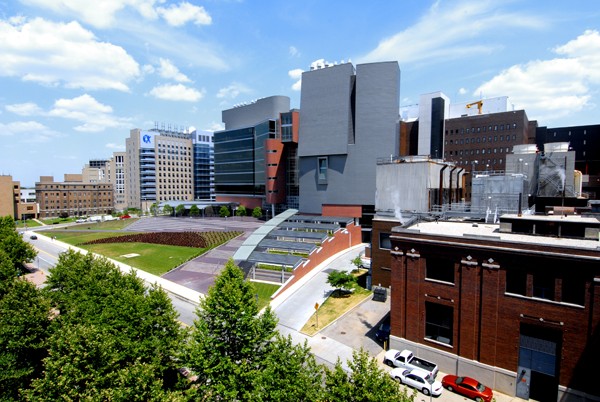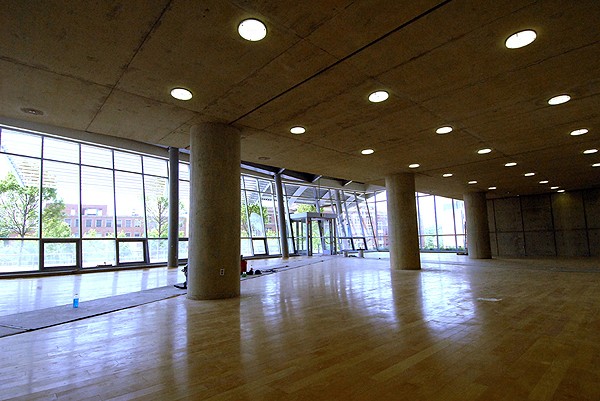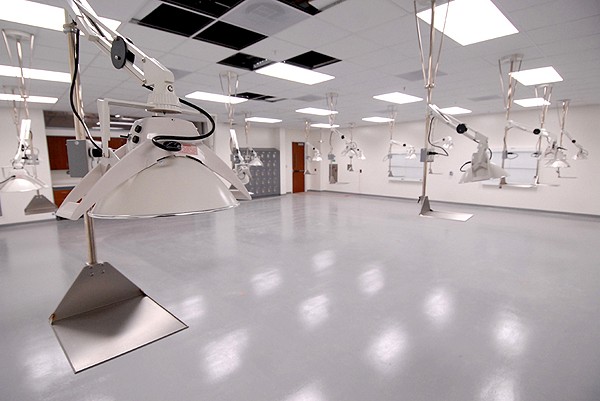20 departments anxious to join efforts
Nine stories of new lab, administrative and recreational space are now home to the next generation of UC lifesavers
Located in the Academic Health Center, the Center for Academic Research Excellence (CARE)/Crawley Building opened August 2008 after four years of construction and a cost of $134 million. The new building and the neighboring Medical Sciences Building, which has undergone the first of a five-phase renovation, will house more than 20 research departments from the College of Medicine.
The two buildings are connected via a glass atrium and together include more than 1 million square feet of space. Forward-thinking designers built research laboratories with enough flexibility so they can easily adapt to new science and technology for years to come.
Malak Kotb, chair of UC’s molecular genetics department, says the efficient design of the new laboratories led her to the university for her research. "The flexibility and the design really attracted me because I could just see that people would be able to interact better, be more productive and efficient in their work and be in a very pleasant environment," Kotb says. "We spend most of our lives in labs."
The Edith J. Crawley Vision Science Research Laboratory, part of the building, is the result of a $12 million bequest from the estate of Edith Johnson Crawley, A&S ’30, JD ’32, for whom a wing of the facility is named. The gift supports eye-disease research, particularly in the elderly.
The renovated MSB building offers areas for scientists and students to mingle and collaborate outside of a lab or classroom setting. In addition to academic spaces, a fitness center, a food-service area, meeting rooms, lounges and a bookstore round out the new facility.
"The old building was somewhat claustrophobic," says Greg Braswell, DAAP ’84, MBA ’91, director of planning for the Academic Health Center. "This gives us public gathering space that was lacking before."
Together the CARE/Crawley and MSB buildings make up one of the largest health-science research complexes in the country, leaving plenty of breathing room for all. The project features an environmentally friendly design and has been submitted to the U.S. Green Building Council as a Leadership in Energy and Environmental Design (LEED)facility.
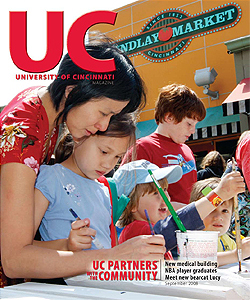
 Issue Archive
Issue Archive
